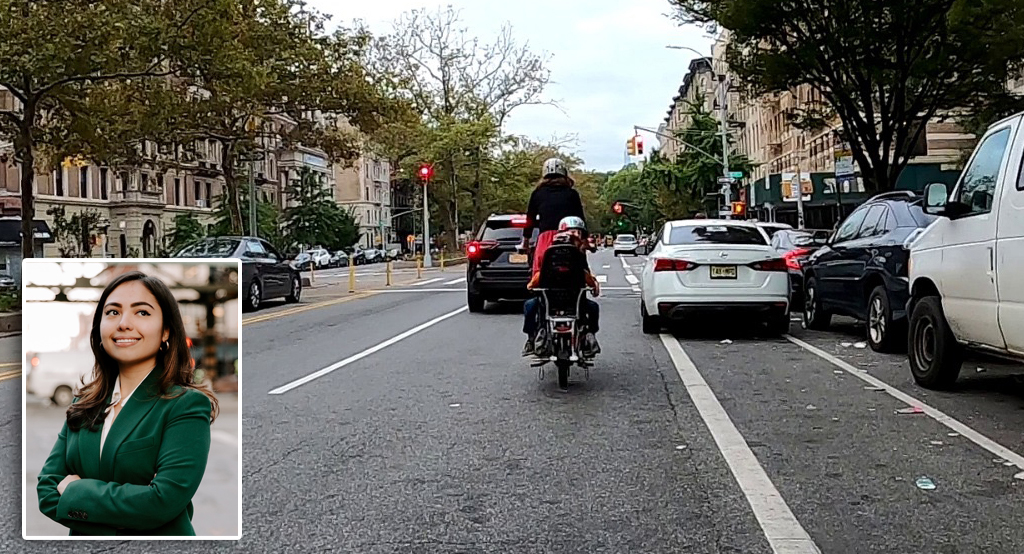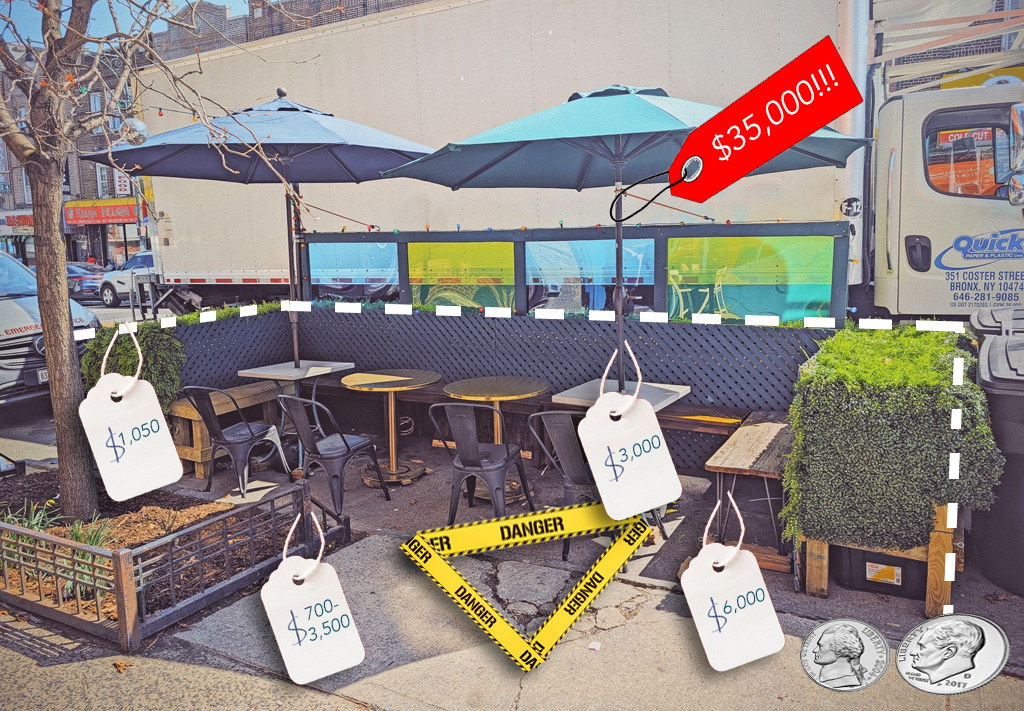Hunts Point is one of New York City's largest industrial hubs, generating 15,000 truck trips every day over local streets in one of the city's poorest neighborhoods. The result? Pollution and dangerous streets for residents, as well as wasted resources for businesses. Yesterday, the city released a mammoth study of land use and transportation in the area, and it includes one recommendation that local advocates say the state should pursue immediately: a study of direct ramps from the Bruckner Expressway to the industrial areas of Hunts Point.

Tuesday morning, neighborhood advocates from the Southern Bronx River Watershed Alliance gathered with Assembly Member Marcos Crespo and Hunts Point industrial business owners to call on the state to prioritize new ramps connecting the Bruckner Expressway directly with Oak Point Avenue in Hunts Point, which would keep trucks off neighborhood streets.
The city presented recommendations for improving the area around the lightly-trafficked Sheridan Expressway in June and yesterday released its final report. Implement those recommendations is now up to the state, which controls the expressways that carve up the neighborhood.
The Alliance sees the Oak Point ramps as an area of common ground with industrial interests on Hunts Point. Management of the Hunts Point Terminal Market opposed tearing down the Sheridan Expressway, a major goal of the Alliance. Ultimately, the city recommended converting a major section of the Sheridan to a surface street instead of completely removing it.
As initially proposed by the Alliance, the ramps would connect to the eastbound and westbound Bruckner. While the city had performed traffic analysis only for ramps carrying traffic to and from the east, it did not preclude the full set of ramps, and advocates called on the state to study the four-way ramp option.
Advocates are asking Governor Andrew Cuomo and his DOT commissioner, Joan McDonald, to move forward with the Oak Point ramp study. They are joined by groups including the Hunts Point Economic Development Corporation and the Hunts Point Produce Market. The coalition's letter to Cuomo notes that the Oak Point ramps would help support a $29 million investment from the governor's regional economic development council in the Hunts Point Produce Market.
"Of all the plans and proposals, this is something we agree on. Let's move forward with this," said Assembly Member Marcos Crespo. "We have businesses that are saying, 'We'd love to do more, but we're constrained.' This would loosen up those constraints to a large extent."
"It's just going to make business a lot easier to do, because trucks will go directly into the industrial area," said Edward Taylor, owner of Down East Seafood distributors, which has 60 employees and 15 trucks. "There's a lot of really big tractor-trailers that are just not made for these streets," he said. "Now is the time to put the infrastructure in so we have the opportunity to grow the area without impacting the folks that live here."
Currently, trucks going to Hunts Point must exit to local streets, where residents are walking between their homes, businesses, and the subway. The risks for pedestrians are high. "You're crossing eight lanes of traffic, including trucks that are entering the expressway," said Angela Tovar, director of policy and research at Sustainable South Bronx. Tovar noted that two pedestrians and one cyclist have died at the multi-leg intersection of Bruckner Boulevard and Hunts Point Avenue since 2001.
"We have had discussions with the mayor-elect's team about how very important this particular issue is," said Kellie Terry Sepulveda, executive director of The Point CDC. "In terms of really huge regional economic development issues that are impacting this borough, we can't think of anything bigger than this."
"Now that the city is making its final recommendations, it's time for the state to move the ball forward," said Vincent Pellecchia of Tri-State Transportation Campaign. "We don't want just another book on the shelf."





